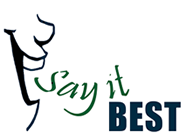
Fun Ways to Help Children Communicate and Speak Effectively
Designed by a Speech Therapist - Research Based Speech Therapy Computer Software

Fun Ways to Help Children Communicate and Speak Effectively
Designed by a Speech Therapist - Research Based Speech Therapy Computer Software
| Dysarthria is a speech disorder that is due to a weakness or incoordination of the speech muscles. Speech can be slow, weak, imprecise or uncoordinated. It can affect both children and adults. "Childhood dysarthria" can be congenital or acquired. In adults, dysarthria can be caused by stroke, degenerative disease, (Parkinson’s, Huntington’s, amyotrophic lateral sclerosis, multiple sclerosis, myasthenia gravis, Duchenne, muscular dystrophy, myotonic dystrophy, Bell palsy, infections (meningitis) brain tumors, and toxins (drug or alcohol abuse, lead poisoning, carbon monoxide, etc.). In children, dysarthria can be caused by congenital neurological problems such a cerebral palsy. Sometimes children acquire dysarthria after injury to the brain from traumatic accidents or infection. Dysarthria can be caused by dysfunction in the nervous pathways affecting any of the muscles of the tongue and mouth, the voice box and the respiratory system. Symptoms of dysarthria include: "slurred speech, speaking softly or barely able to whisper, slow rate of speech, rapid rate of speech with a "mumbling" quality, limited tongue, lip, and jaw movement, abnormal intonation (rhythm) when speaking, changes in vocal quality("nasal") speech or sounding "stuffy"), hoarseness, breathiness, drooling or poor control of saliva, chewing and swallowing difficulty. Therapy depends on the cause, type, and severity of the symptoms. Compensatory strategies are often used. Goals may include slowing the rate of speech, improving breath support so the person can speak more loudly, muscle strengthening exercises, increasing mouth, tongue, and lip movement, or improving articulation so that speech is clearer. The SLP can also help the person’s caregivers or family learn to adapt the environment so that they can understand the person better and can teach compensatory strategies that will enhance communication. For some people speech is not a viable option. In these cases, alternative or augmentative systems can be used. |
Tips for the person with dysarthria:
|